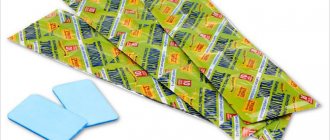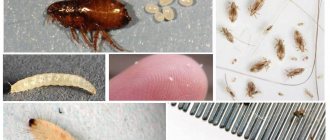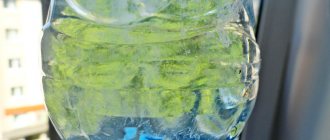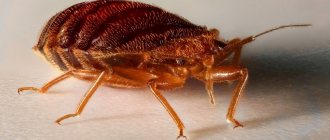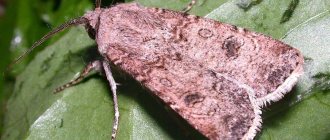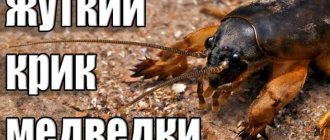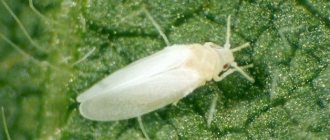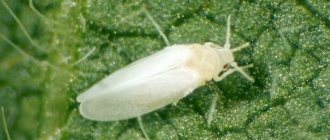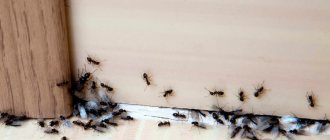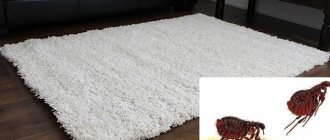Mosquitoes... No one needs to explain what kind of insects these are and how unpleasant it is to be around them. These creatures attack people from spring to autumn, so the question of how to get rid of mosquitoes in an apartment remains relevant year after year.
Defeating mosquitoes in your apartment is not an easy task, but, nevertheless, it is quite feasible. At the moment, a huge number of means and devices are known to combat these blood-sucking insects, ranging from traditional medicine methods to modern chemicals.
These include devices such as fumigators and ultrasonic repellers. It remains only to find out which remedy is more reliable and effective.
Why do mosquitoes appear at home?
Mosquitoes in an apartment are a very common phenomenon, and hardly anyone can boast of a summer spent without them. Before looking for effective methods to combat these insects, you should find out the reasons for their appearance in apartments.
- Humidity. Mosquitoes favor dampness, so if there is water in the basement of a house, insects will be happy to adapt this basement to their habitat. It is from this that they will fly to different apartments. So, first of all, it is necessary to monitor the condition of the basement.
- Warm. As is known, only female mosquitoes suck human blood. They need it to lay eggs. The female insect feels a breath of warm air from the apartment and flies to the heat source.
- Muffled light. Sunlight blinds mosquitoes, and therefore they rarely attack during daylight hours. Most often they can be seen at dusk or at night.
- The mosquito has more than 70 receptors that allow it to detect a wide variety of scents. The most attractive to them is the smell of sweat and alcohol, or more precisely, the smell of ethanol from a drunk person. These are the odors, the intensity of which a person can influence. There are also a number of aromas that only mosquitoes can understand. For example, mosquitoes are attracted to people with blood types 1 and 2, children and pregnant women.
How long does a mosquito live in an apartment after a bite?
It's no secret that it is the female insects that bite. Mosquitoes are not animals that die soon after being bitten. The bite and life expectancy of the parasite are in no way related. A female mosquito lives 42–115 days, and a male mosquito lives 20–60 days.
As soon as the insect smells a person, it begins to hunt for him in order to bite him. The bite itself is a kind of exchange: the parasite pierces the skin and injects saliva, which prevents the blood from clotting, and the person “gives” the blood. The substance contained in saliva is what causes skin reactions, redness, and itching.
Types of mosquito repellents
All mosquito repellents can be divided into two groups - individual and general.
- As the name suggests, an individual product can only protect the person who uses it. These include various products applied to human skin and clothing - sprays, ointments, aerosols. It is worth noting that all these means only repel insects, but do not destroy them. It is more appropriate to use such products on the street than in an apartment.
- Varieties of general means are aimed at combating all insects in the room. The choice of such products is optimal for apartments, houses, cottages and even open street spaces.
Modern mosquito repellents
- One of the effective substances against mosquitoes is diethyltoluamide (another name for the substance “deta”). This substance was discovered in the middle of the last century and is actively used in personal protective equipment. Available in the form of aerosols, lotions and creams. The most well-known products using diethyltoluamide: “Moskitol”, “Deta”, “Taiga”.
When using the product, it is worth remembering that this is a chemical substance, and its dosage for adults and children should be different.
So, if you have to spend an hour and a half in a place where mosquitoes accumulate, preference should be given to a product with a concentration of no higher than 7-10%.
Before using any repellent, you must carefully read the instructions and do not increase the concentration at your own discretion.
Most likely, this will not improve protection, but side effects are very likely.
- Another well-known mosquito repellent is permethrin. It can be applied to clothing, shoes and other materials, but under no circumstances should a product containing permethrin be applied to exposed skin. The substance is also effective against ticks, fleas and other insects. It is a good option for hiking trips where you plan to spend the night in the open air.
- Insecticide-based products are extremely popular. The fumigator is the most famous representative of this type of product. The fumigator consists of a plastic container and an electric plug. A special substance (plate or liquid) is placed in the container, the device is connected to an outlet, and due to heating, the insecticide begins to evaporate and drive away insects with toxic fumes.
As for the filler, the most common is a liquid product; it begins to act 5 minutes after the fumigator is connected to the network. The plates are also popular and allow you to forget about mosquitoes for the whole night.
When purchasing, the main thing is to pay attention to the expiration date and give preference to a trusted manufacturer.
The most famous fumigators are Raptor, Raid, Fumitox.
- A mosquito coil works on the same principle as a fumigator. The device is set on fire at one end, and when smoldering, the active substance is released into the air. To eliminate the risk of fire, the spiral is equipped with a special metal stand.
It is recommended to use spirals outdoors, placing them at a distance of 1.5-2 meters from the person’s location.
- Ultrasonic devices are the most modern devices for insect control. The principle of operation is based on the fact that the device sends ultrasonic pulses that repel insects, but are harmless to the human ear.
Devices differ in the type of power supply (batteries or mains), as well as range. The advantages of using ultrasonic protectors include silent operation, absence of odor, and safety of use for children, adults and pets. However, it is important to know that even expensive devices are not 100% efficient.
Traditional methods of getting rid of mosquitoes
Along with modern mosquito repellents, there are a huge number of natural remedies to combat these insects. The use of these methods is especially important when there is a small child, a pregnant woman, or pets in the house.
The most common are the following folk methods.
- Decoctions with the addition of various herbs and essential oils. Mosquitoes in an apartment cannot tolerate the smell of plants such as vanilla, cloves, and wheatgrass root. A decoction prepared from one of these plants can be lubricated on exposed skin - it is excellent against mosquitoes. Such a drug will certainly drive away unwanted insects.
- Vanilla can also be added to baby cream and safely used for the care and protection of children.
- The aroma of vinegar will easily drive away mosquitoes. It must be mixed with water in a 1:1 ratio and you can wipe the skin. After a few minutes, the aroma will no longer be felt by people, but will remain very unpleasant for mosquitoes.
- You can also evaporate valerian, 100% eucalyptus extract, cedar and camphor oil in a water bath.
- It is permissible to add essential oils to the aroma lamp. Oil extracts of clove, anise and tea tree are excellent.
- Scented oils can also be applied to light bulbs.
- Also, mosquitoes in the apartment will not be able to tolerate the presence of basil leaves or tobacco.
- You can plant tomatoes or geraniums on the window. Another option for using flowers is to place a bouquet of lilacs or bird cherry in the room.
- Garlic is no less effective in fighting mosquitoes, but due to its strong smell, not everyone is ready to use it. Just chop a couple of cloves of garlic and put it on the windowsill - a good night is guaranteed.
What does a mosquito look like and what is it?
Appearance
Mosquitoes belong to the family of dipterous insects and are classified as blood-sucking mosquitoes. The size of adults can range from 3 mm to 5 cm, depending on the species. The color of the body also varies. Most often there are individuals with a black or gray color, but there may be species with a body of orange, red, yellow or green. Although insects belong to the dipteran family, they actually have two pairs of wings, one of which has lost its function.
Common mosquito
A special feature of these blood-sucking pests is their oral apparatus, which consists of elongated long upper and lower lips, which form the so-called sheath. Inside the case there are 2 pairs of jaws with sharp teeth. Females have a more developed oral apparatus, so they can bite through the skin of a person or animal and drink blood. Males' jaws are not very developed, so they are "vegetarians", that is, they feed only on plant juice.
Reproduction
They belong to insects that are characterized by complete transformation. Mosquitoes go through four stages of development: egg - larva - pupa - adult. The first three stages take place in reservoirs; only adult individuals reach the surface.
The type of mating of these flying insects is called eurygamy, that is, the males gather in a swarm and wait for females to fertilize them. Females attract males with a squeak-like buzzing sound produced by the movement of their wings. The female flies into the swarm and is fertilized by the male. After mating, the male returns to the swarm, and the female flies off in search of blood necessary for bearing offspring. It is noteworthy that in urban conditions the common type of mating is stenogamy, that is, alone, since there is not so much open space in the city, and it is difficult to form a swarm in such conditions.
Mosquito eggs
The number of eggs in a clutch directly depends on the amount of blood drunk, which is why insects are so aggressive towards humans. In one clutch, a female can lay from 30 to 150 eggs. Eggs are laid on the surface of a reservoir in calm, standing water with minimal flow speed, for example, in puddles, ponds, lakes, and reed thickets.
After a few days, larvae emerge from the eggs into the water. They look like small worms, dirty gray in color for squeakers and green or red for jerks. The larvae are food for various animals, birds and fish, so fishermen use such larvae (bloodworms) as bait. The larvae can live at the bottom of the reservoir, swimming out every 15 minutes for a new portion of oxygen, or they can swim near the surface of the water, sticking the “tail” of the body into the air, this is where the respiratory organs of the larvae are located.
Mosquito larvae
Over the course of 20 days, the larva molts 4 times, shedding its old, tight skin and gradually increasing in size. So, during this time, the size of the larva’s body can increase 500 times. After the last molt, the larva turns into a pupa. The pupa also lives in the reservoir, periodically rising to the surface for oxygen. The pupa is identical in lifestyle to the larva.
After 5 days, an adult emerges from the larva and moves to live on land. The lifespan of males is about 3 weeks, while that of females is about 3 months, but under unfavorable conditions the life of pests becomes shorter.
Lifestyle and nutrition
Favorable conditions for living and breeding of pests are warm weather (more than 16 degrees) and high humidity (more than 80%). However, mosquitoes quickly adapt to unfavorable conditions for them. In temperate climates, insects are active from May to October. In the summer, in nature, mosquitoes often live near ponds, lakes, swamps and other places with high humidity.
In winter, they move to warm barns where domestic animals live. In urban environments, they live in basements or sewers. When the air temperature is less than 16 degrees, mosquitoes enter winter suspended animation. In this way, the lifespan of females can be extended up to a year.
Many species of mosquitoes are harmless to humans because they feed on plant nectar. But females often feed on blood, which is needed to bear offspring, so bloodsuckers settle next to humans. Bloodsuckers sense their prey many meters away using their antennae.
Other ways to control mosquitoes
In addition to the means described, there are other methods of combating blood-sucking insects. One of the proven mosquito repellents is mosquito nets for windows and doors.
- Children and pregnant women can use special mosquito repellent bracelets. They are silicone armbands with a recess into which citronella oil is poured. You can purchase such a bracelet or make it yourself.
- If you have dinner outside, say, at the dacha, you can use a soap solution. The plate with water should be placed in an inconspicuous place not far from your location. Dampness will attract insects, and a soap solution will prevent them from flying away.
Homemade fumigators and traps
There is another way to temporarily forget about the existence of mosquitoes. Cut a lemon or orange in half, inserting about a dozen clove buds into each half. This fragrant and, most importantly, harmless fumigator will allow you to sleep peacefully even with an open window.
You can make a mosquito trap from scrap materials. Take a regular plastic bottle, cut it into two parts so that the neck is slightly shorter than the base. Pour a glass of hot water into it, add 50 grams of sugar and a spoonful of yeast.
Stir and insert the funnel formed from the neck into the base so that it does not touch the water. Wrap the structure in paper or cardboard. Such a simple and effective device can be made together with your child, at the same time teaching him a lesson in chemistry and cooking.
Yeast dough releases carbon dioxide during fermentation, which attracts insects. But they can’t get back out.
An elegant, I would even say, designer mosquito repeller can be made as follows.
Take four glass jars, place two branches of rosemary inside each, and cover them with a few slices of lemon. Pour plain water, filling the jars three-quarters full.
Add ten drops of your favorite essential oil (e.g. peppermint, lavender, cedarwood) to each container. Add a little more water. Place floating candles there, light them - you are guaranteed a romantic evening without unnecessary squeaking bloodsuckers! The fluid must be changed weekly.
Useful tips
To avoid unnecessary attention from mosquitoes, you should not use perfume. Their aroma attracts insects in the same way as the smell of sweat.
You should avoid wearing dark colors and carefully plan your time spent outdoors. Don't forget about the times when mosquitoes attack.
If, despite all precautions, you are exposed to insect bites, the damaged areas must be lubricated with hydrogen peroxide, vinegar solution, alcohol or a special anti-itch ointment. Applying ice and cold water soaks are also effective.
Today there are a huge number of both folk and modern mosquito repellents. Which one to choose is up to you!
